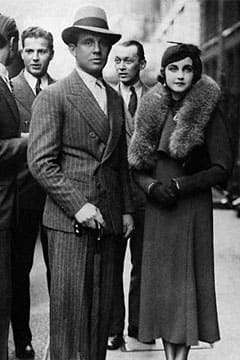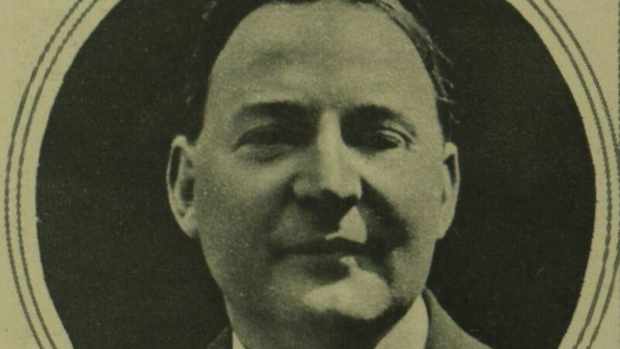Barbara Hutton: “Poor Little Rich Girl”
Poor Little Rich Girl
Barbara Hutton was one of the wealthiest women in the world in her time and is proof that money can’t buy you happiness.
Her grandfather started the F.W. Woolworth chain, and although having every possible advantage, Barbara’s life was one of sadness and self-destruction.
The Woolworth Fortune
Frank Winfield Woolworth (1852–1919) borrowed $300 and opened a store in Utica, New York in February 1879. The concept was that all goods were priced at five cents. The store failed, but by April of the same year, Woolworth had a successful Great Five Cent Store in Lancaster, Pennsylvania.
The F.W. Woolworth Company expanded to become one of the biggest retail chains in the world. At the time of his death in 1919, Frank Woolworth had a net worth of $76.5 million, that’s about $1.2 billion today.
Frank’s money went to his ailing wife, Jennie. In 1924, Jennie died and her estate was split three ways, with Barbara receiving about $28 million. She was only 12 at the time so the inheritance was put into a trust that was astutely managed by her father, Edward Francis Hutton.
By the time Barbara turned 21, her father had almost doubled the value of her holdings and got out of the stock market months before the crash of 1929.
When she reached the age of majority in 1933, she had a fortune of $50 million, just over $1 billion in today’s money.
Barbara Hutton’s Early Life
E.F. Hutton was a stellar money manager but a louse of a family man; he was a philandering boozer. His bed-hopping and drinking drove his wife, Edna, to an early grave. The death certificate said “Mastoiditis” (brain damage caused by an ear infection), but Hutton money ensured there was no autopsy.
The long-held belief is that Edna took her own life because she was distraught about her failed marriage. It’s reported that Barbara was the one that found her mother’s body.
Hutton shipped four-year-old Barbara off to live with relatives while he went back to what interested him most, making gigantic gobs of money and chasing women. Then, it was private school that involved little socializing with her peers and a lonely existence in a 26-room apartment.
At 18, as New York high society demanded, there was the debutante ball. People such as the Vanderbilts, Astors, and Rockefellers were there in all their haute couture finery.
The bill for the shindig was $60,000, and it caused quite a stir as the Great Depression was starting to devastate ordinary families.
Barbara Hutton’s Marriages
Deprived of parental love as a child, Barbara confided to her diary,
“I long for a friend, somebody to understand me, an intimate with whom to share my innermost thoughts and terrors. Deep down I feel inadequate. I am ugly, fat, awkward. I am also dull ... Nobody can ever love me. For my money but not for me ... I will always be alone.”
The first opportunist to exploit Hutton’s desperate need for affection was Alexis Mdivani from Georgia (the country not the state).
He styled himself a prince and he and Hutton married in 1933. Her dowry was $1 million and it didn’t take Mdivani long to burn through that on houses, jewellery, and polo ponies.
By 1935, the couple was divorced and Mdivani was dead after crashing his Rolls-Royce at high speed in Spain.

Barbara Hutton with Alexis Mdivani. On their wedding night, he told her she was fat, triggering the first of several bouts of anorexia.
Barbara wasted no time in re-marrying. Her second husband was Danish Count Kurt Haugwitz-Reventlow. He was an abusive brute who spent time in jail for assaulting his wife. That’s when Barbara started doing drugs. The marriage lasted until 1941 and produced a son, Lance.
Movie idol Cary Grant, who certainly didn’t need the money, became Barbara's third husband in 1942. The press, in a catty mood in its coverage of Hutton, dubbed the couple “Cash and Cary.” She also became known as “the poor little rich girl.”
Grant couldn’t put up with Hutton’s need to surround herself with fawning Europeans with titles, and left in 1945.
Prince Igor Troubetzkoy was next to marry the heiress in 1947. It’s clear by now that Hutton had become an extremely difficult person to live with. Prince Igor bailed out in 1951, and Hutton attempted suicide.
Dominican playboy and diplomat Porfirio Rubirosa was husband number five for all of 53 days. Bedroom issues caused the break-up.
Rubirosa preferred the boudoir of Zsa Zsa Gabor for most of his seven-week marriage to Hutton. Despite his tom-catting around, Rubirosa scored big in the divorce settlement: millions of dollars, a plane, and a coffee plantation.
Baron Gottfried Von Cramm lasted from 1955 to 1959. He said he tried to get Hutton off her substance abuse. He failed and divorce followed.
Prince Pierre Doan was the seventh and last of Hutton’s spouses, and it ended in the now-familiar pattern. Less than two years after the wedding, the marriage was over in 1966.
Except for Cary Grant, Hutton’s exes all walked away with millions in settlements.

Cary Grant seems to have been genuinely fond of Barbara Hutton but her incredible neediness was a deal breaker.
Barbara Hutton's Decline
The news media never tired of covering Barbara Hutton, usually negatively. There was little understanding of, or sympathy for, her mental health issues. The attitude was that a person with her immense wealth and social standing had no right to be depressed.
It’s possible to speculate that her lavish spending was a coping mechanism for her melancholy. There were grand homes, very expensive jewellery, and exquisite pieces by Cartier and Fabergé. She made generous gifts to numerous charities.
But, her extravagance did not banish the blues and neither did the substance abuse; she frequently appeared drunk in public. In addition to the heavy drinking, she was using morphine and Valium.
Emotionally and physically she was falling apart and then, in 1972, her son was killed in a plane crash. She was devastated.
Her fortune was vanishing and she started to sell possessions to pay for her living expenses. She moved into the Beverley Wilshire Hotel, California where she died in May 1979 of a heart attack.
She was 66 years old and a biographer said she had just $3,500 left in her chequing account.
Bonus Factoids
- The Woolworth chain started to decline in the 1980s and closed down in July 1997. It re-emerged as a sporting goods-only retailer under the name Foot Locker.
- Marjorie Merriweather Post, heiress of the Post cereal fortune was Barbara Hutton’s aunt. Post owned a Florida mansion and Hutton often stayed there as a sanctuary from her bleak life. That estate is Mar-a-Lago.
- One of Hutton’s possessions was a string of pearls that had once belonged to Marie Antoinette.
Sources
- “Alexis Mdivani – ‘The Charming Prince’. ” Georgian Journal, Dec 11, 2014.
- “Barbara Hutton: The ‘Poor Little Rich Girl’ Who Had Everything Except Happiness.” Jerome London, Thought Catalog, August 12, 2019
- “Hutton, Barbara (1912–1979).” Encyclopedia.com, March 12, 2021.
- “Poor Little Rich Girl: The Life and Legend of Barbara Hutton Hardcover.” C. David Heymann, Random House, November 1, 1983.




